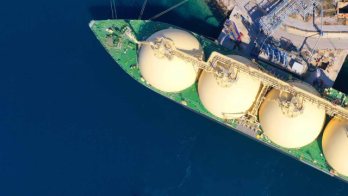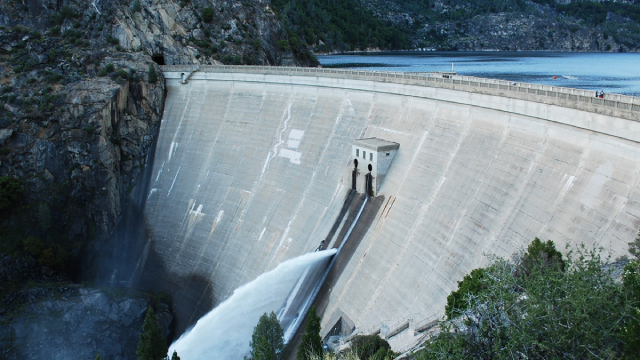Kyle Haberberger, P.E. - Offshore Project Development Manager
In late October 2023, ENI celebrated the sail away of the Tango FLNG (Floating Liquefied Natural Gas) from Dubai as the facility departed for its new home off the shores of Congo. With refurbishment work completed by Dry Docks World under the guidance of the facility’s previous owner, Exmar, the FLNG facility will now be ready to liquefy 1 billion cubic meters per annum of gas and add Congo to the list of LNG exporting countries. Fast forward one month and the vessel arrived in Republic of Congo representing the third location where Tango FLNG will produce LNG, making it a true success story for the unique, re-deployable nature of FLNG technology. Tango FLNG proves that floating facilities can be a differentiator compared to peers in the onshore LNG space.
To understand the unique and exciting story of Tango FLNG’s mobility, one must look back at the eventful lifecycle of the facility. Exmar, a Belgium-based oil and gas shipping and infrastructure provider, was the original developer and intended it to serve Pacific Rubiales (now Pacific Exploration & Production (PEP)) offshore of Tolu, Columbia. Exmar contracted early topside engineering to Black & Veatch (B&V) while B&V brought in barge fabrication yard Wison to the team to provide an integrated facility. Exmar structured the EPCIC contract in 2012 with Wison as prime contractor while B&V took subcontractor position. Unfortunately, by the time the project finished construction in 2016, instability in the oil and gas market had prompted PEP to cancel their Columbian LNG export project and leave the Tango without a home.
Having no project site in 2016 but still needing to commission and test their asset, Exmar began the start-up of the Tango FLNG at the construction site using a temporary regasification skid previously designed by B&V for Exmar’s FSRU barge. This decision allowed Exmar to prove the functionality of the facility and close out its contracts while also becoming the first FLNG facility to successfully produce LNG. While this milestone was short-lived in the shipyard, it was an important step to secure a new destination for Tango. It also marked a major milestone for a young, quickly growing FLNG industry.
Having proven their asset operational, Exmar began a journey to find the FLNG a new home. This process had to rely on the robustness of the topsides design and the flexibility of the liquefaction facility to be able to accommodate many different potential gas fields. Key to this process was Black & Veatch’s patented PRICO® technology, which uses a single-mixed refrigerant (SMR) loop for liquefaction. The benefits of PRICO® include a simplified refrigeration system requiring minimal equipment, low capital and operating expenditures, and simplified control and maintenance, making it ideal for use on FLNG. The PRICO® liquefaction design’s simplicity allows it to be flexible and adjust to a wide range of potential gas compositions.
In 2019, Exmar chartered the Tango FLNG to YPF SA for use at the Bahia Blanca port in Argentina. In a remarkably short 6-month period, Exmar signed the YPF contract, performed the required modification work for the facility at Bahia Blanca, and began producing LNG in South America. At the time, Tango was the fourth FLNG to achieve commercial operation and the second commercially operated FLNG unit to feature PRICO® liquefaction technology by Black & Veatch. As the achievement was celebrated, the project operation in Argentina was short-lived. In 2020, the worldwide pandemic forced a change in energy policy in Argentina, causing YPF and Exmar to terminate their charter agreement. Once again, the Tango was a facility without a home.
After another long search for a new project location, Exmar and ENI announced in August 2022 that ENI had purchased the Tango FLNG for use in the Marine XII block offshore Republic of Congo. The facility spent time in Dubai receiving modifications for its new site location but is now sailing towards yet another home. As Tango once again begins LNG production, it will be a rare achievement where a piece of infrastructure is operational on its third continent in less than 10 years. It speaks to the unique nature of FLNG projects and their ability to move around the globe as markets and energy demands change. The key is having a technology that allows you to unlock this inherent flexibility and capitalize on the opportunity.
The flexibility of Tango FLNG will continue to be tested once it begins operation in Congo. ENI has ambitious plans for the region, and the gas composition seen at Tango FLNG is expected to change significantly during early operations as more gas fields and pre-treatment facilities come online. As ENI brings upstream assets online, the simple and robust topsides design will allow for a smooth transition of operations.
While the story of Tango FLNG has been filled with many unforeseen challenges, it provides great optimism for the industry about the flexibility of an FLNG asset. It proves that with a flexible liquefaction technology like B&V’s PRICO® process, it is possible to adapt and change to many different gas specifications. With the gas industry constantly changing and geopolitical uncertainty on the front page of the news, developers need solutions that can quickly adapt to a rapidly changing energy landscape. Whether it be sanctions or the discovery of new gas fields, FLNG provides the opportunity for rapid deployment to monetize gas assets and the ability to uproot a project to a new location.











